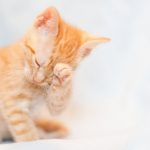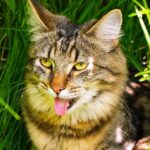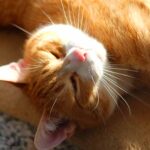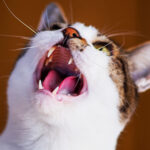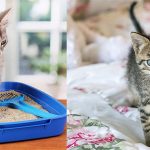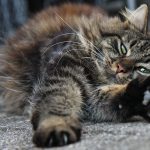Cats pull their hair out in clumps or on their tails more frequently than most people realise. Sometimes this behavior is accompanied by visible … [Read more...]
Why Do Cats Eat Their Hair?
Cats have plenty of habits which appear perplexing or inexplicable to us. 'Why do cats eat their hair?' is one such riddle. I know one long haired cat … [Read more...]
Can Cats Breathe Through Their Mouth?
Here’s a fun feline trivia question for you: can cats breathe through their mouth? I have hardly ever seen any of the cats I’ve lived with breathing … [Read more...]
Do Cats Like Sunlight?
In my mind, the archetypal image of a cat has always been of one basking in a pool of sunlight on a bedspread. As you can probably guess from that, … [Read more...]
Help! My Cat Is In Heat And Won’t Shut Up
It’s something of an understatement to point out that feline courtship and mating is a little different to our own. Female cats in season are … [Read more...]
Why Is My Cat Peeing On Bed Covers?
The causes of a cat peeing in the bed can include anxiety or stress, medical problems and litter box issues. Urinating in inappropriate … [Read more...]
Why Is My Cat Not Using The Litter Box? Causes And Solutions
When an older, previously clean, cat poops behind the couch it can be a bit of a shock! And when one accident becomes two, it’s time to take … [Read more...]
Cat Toilet Training: How To Potty Train A Kitten
Cat toilet training seems easy. You put a litter box in the corner of the room, fill it with kitty litter, and they use it to do their business. But … [Read more...]
Why Does My Cat Stretch When He Sees Me?
When I arrive home from work my cat always rushes down the stairs, then performs a range of elaborate stretches by my feet. They are his way of … [Read more...]
How To Get A Cat To Bond With You
How To Get A Cat To Bond With You - Is brought to you by expert cat behaviorist Clare Hemington. Clare is an accredited Cat Behaviourist and a member … [Read more...]
